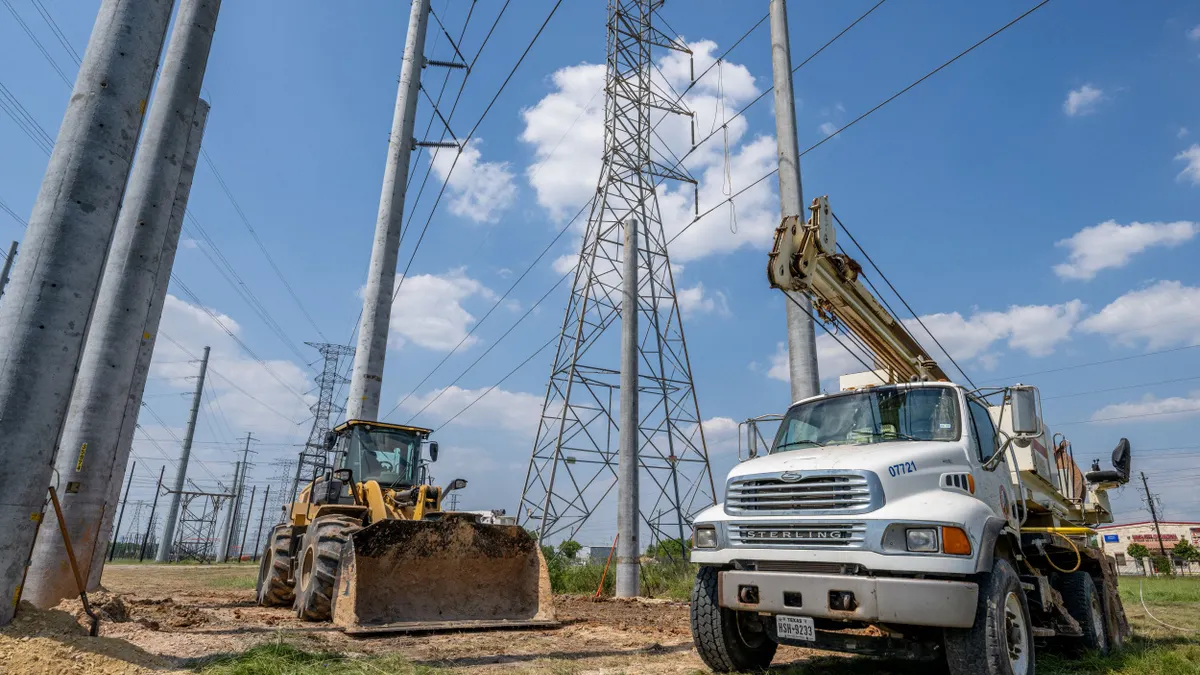The following is a contributed article by Michael McKenna, president of MWR Strategies. McKenna previously served as deputy director of the White House Office of Legislative Affairs under Donald Trump and advised the president on energy, environmental and other issues.
During its April 15 open meeting, FERC, led by Chairman Richard Glick, issued a long-anticipated supplemental Notice of Proposed Rulemaking (NOPR) with respect to transmission incentives. Among the issues addressed was the 50-basis point transmission incentive (added to the return on equity) for companies who participate in regional transmission organizations (RTOs).
This RTO adder, along with other transmission incentives, has been the subject of attention from the Chairman for some time. He has argued, well and consistently, in a variety of forums, that FERC's patchwork of transmission incentives needed to be replaced with a more coherent approach that sets the appropriate return on equity for transmission projects at a level that made sense for each specific project.
He may be right.
In this instance, the incentive in question was designed to encourage organizations to join a regional transmission organization. Consequently, the supplemental NOPR proposes that the incentive be terminated after three years.
While the Chairman's main point — that the transmission incentives are a product and a symptom of a broken process — may be correct, his timing is suboptimal for a number of reasons.
First, reducing the economic returns on transmission projects will probably mean less transmission gets built. That usually would be unremarkable, but the current Administration has emphasized repeatedly that it wants and needs to build more transmission to meet its environmental goals. Keeping in mind that several studies have indicated (and no studies have disputed) that the transmission system will need to be twice or even three times as large to achieve net zero GHG emissions by 2050, it is possible and perhaps likely that FERC's proposed NOPR is at first glance (and probably in the final assessment) not aligned with that vision.
Second, the proposed rule is contrary to labor approaches favored by the administration. The prevailing wage requirement to build transmission (embedded in pending legislation and almost certain to appear in the spending provisions of the eventual reconciliation package) will necessitate more spending, not less, on each transmission project.
Third, the proposed rule is contrary to the environmental justice policy favored by the Administration. Environmental justice concerns will increase the cost of transmission projects either because of rerouting or as a result of the need to appropriately compensate specific communities in order for some projects to proceed.
In issuing the NOPR, both Chairman Glick and Commissioner Allison Clements emphasized the importance of FERC in the planning of transmission. It is unclear what, exactly, that means. It is, however, worth asking a foundational question: In what instance has federal involvement in “planning” ever accelerated a process? If FERC is interested in expanding and modernizing the transmission system, it might be better if it made clear to policymakers the need for eminent domain and permitting reform to truly transform the siting and building of transmission.
Adding another layer of planning is a recipe for longer timelines, high capital costs, and misallocation of resources.
Finally, and most importantly, for those who have reservations about the wisdom and efficacy of RTOs as currently structured and governed, the proposed rule is no worse than a mixed blessing. Anything that causes companies and individuals to reduce their attachment to unelected and unaccountable organizations is probably a good thing.
As we have learned in Texas and California, and are likely to learn soon in New England, RTOs are accountable to no one. This would be alarming enough if they were responsible for the provision of toasters or helicopters. But they are in fact responsible for the provision of an irreducible minimum in the modern world — affordable, reliable electricity.
Despite this, it is uncertain (or at least unanswered) whether regional transmission organizations are even the most economical or efficient way to deliver that affordable, reliable electricity. If you have to be either incentivized (through more cash) or mandated (by law, as is under active consideration as part of the Clean Future Act) to join something, you might want to take a hard look at its utility.
By removing an incentive to join and remain in RTOs, Chairman Glick may have provided everyone an opportunity to step back and think about where the current road is leading us, and whether we really want to go there.





















